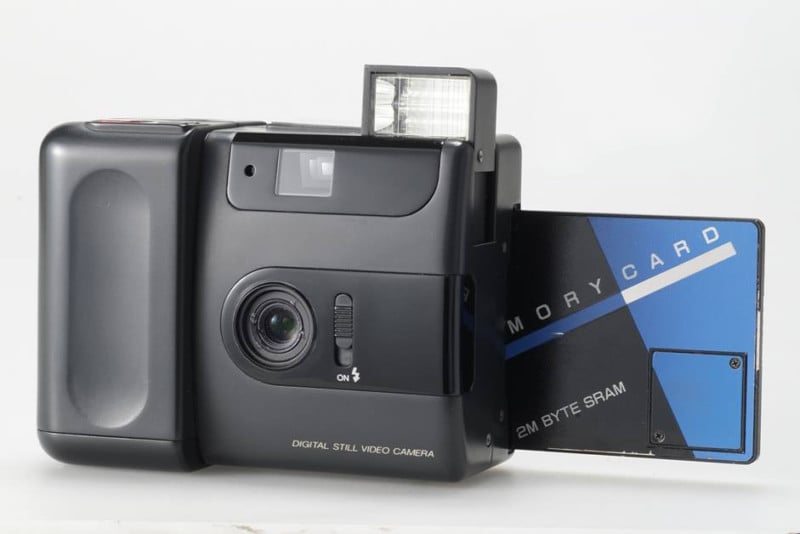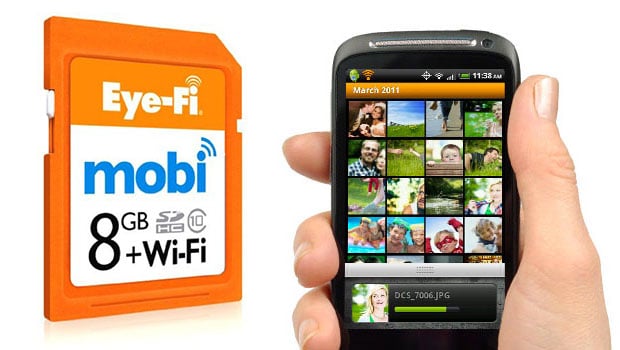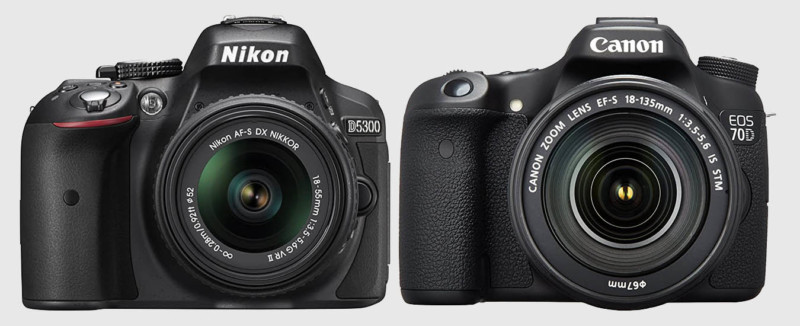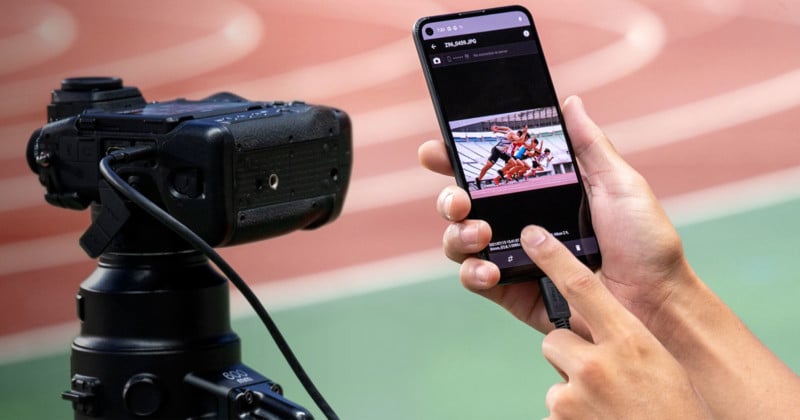![]()
It seems like a small request to a simple need… you shoot an event using your main standalone camera and want to upload a few choice shots to social media or send to a client to give them something to post straightaway. Or – as I’ve done – undertake some quick processing on your phone before sending it to an Instax printer and giving your customer an instant print.
The advent of the smartphone created two problems for the standalone camera: firstly, vast swathes of casual compact camera users switched to using their smartphones instead, and secondly, of the remaining shooters, a significant proportion wanted to get at least some of their photos onto their smartphones.
We are still seeing the fallout of the first problem as camera shipments plummeted from their high in 2012, reducing the market to a shadow of its former self. That’s the reality of camera sales and manufacturers are adjusting their expectations and offerings to match consumers’ requirements. The latter was essentially a feature request – “please make it easy to get my images onto my phone.”
A History of Cameras, Wi-Fi, and Bluetooth
A little history might help to put this into context… the first end-to-end digital camera was Fuji’s Fujix DS-1P, which incorporated a 0.4 megapixel CCD sensor for capture and a 2MB solid-state memory card. And so started the requirement to offload images to a computer in order to process them into a final deliverable.

This preceded the first Wi-Fi standard by some margin, with the memorable 802.11 arriving in 1997 and offering a fairly pedestrian 2 Mbit/s. That would have downloaded your Fuji image in around 2 seconds, but integrated Wi-Fi didn’t arrive until Nikon’s Coolpix P1 in 2005, by which point sensor resolution had increased to 8 megapixels with 802.11g offering a throughput of around 20 MBit/s.
The problem with Wi-Fi – besides the issue of interference – was battery life: it literally drained away. Solutions to optimize this problem revolved around keeping the transceivers off most of the time and sending JPEGs to minimize data transfer.
One way to mitigate this problem was to switch to Bluetooth as a wireless technology. Introduced in 1998, it was intended as a low-power, low-throughput technology to replace existing wired connections rather than specifically for file transfer and as a result (by the time the Coolpux P1 came out) could only manage 2 MBit/s. The latest implementations stretch this to 24 MBit/s, but the transfer is usually achieved over Wi-Fi with only the connection negotiated over Bluetooth.
In short, it may be low power – which is great for constantly leaving the connection running and controlling your camera (alongside implementing a file transfer) – but it isn’t intended for large file transfers.
Getting Wi-Fi into a DSLR became a key consideration as it meant being able to transfer files to your laptop when on the move and the likes of Wi-Fi-enabled SD cards (such as Eye-Fi) became de rigeur.

It wasn’t until 2013 that Nikon (D5300) and Canon (70D) integrated Wi-Fi into their DSLRs – quite a pregnant pause from that first Coolpix P1, but by this point, the horse had well and truly bolted. Nikon’s iconic D800 from 2012 was a 36-megapixel beast producing ~40MB compressed raw files. Using the then-current 802.11n standard would have achieved a likely 50 Mbit/s throughout taking – at best – over a minute per file.

However, that’s not the biggest problem with Wi-Fi – it’s actually just getting it to work! I’ve had a Fuji M1 and E3 over the years and you’d hope that iterative improvements would make transfers like this seamless. They don’t. For whatever reason, across a number of different Android devices, image transfer is as painful as it can get with transfers regularly dropping out.
Early versions of Sony’s Play Memories were fraught, but better, although its latest incarnation in the form of Imaging Edge Mobile is actually quite good. Except… for both these products you have to shoot in JPEG. It’s as if manufacturers want to ring-fence you, have given up on transferring raw, or think that’s all people want to download. I tend to only shoot in raw, which means having to develop in-camera, transfer, then edit on the phone.
Until manufacturers improve their offerings across the board, then there has to be a simpler, more flexible, and better way. And there is!
Go Wired!
You should do wired photo transfers. It’s as simple as that, and it dates back to the dawn of integrated DSLRs. For example, Canon’s first homegrown model (EOS D30 in 2000) included a remote capture application (aka tethering) but was clearly a testing ground for the new software and hardware. The EOS-1D made that a realistic package by moving from USB to Firewire and better transfer speeds.
However, it’s perhaps the pivotal release of Lightroom 3.0 (2010) which is important for introducing tethering, making shooting, cataloging, and editing a compelling package. Of course, connecting your camera to a PC requires… a PC and a cable with some careful balancing!
The reason for going wired is threefold: it’s cheap, reliable, and fast. If you have a socket at each end, then a simple cable is all you need to connect the two devices. You plug it in and it works, with no interference, day in and day out. Finally, wired technical specifications are always leaps and bounds ahead of wireless, meaning transfers will always be quicker.
The problem in this mix was the smartphone, which was designed to be wireless… almost by definition! We have 5G, Wi-Fi, and Bluetooth, with wireless headphones, charging, keyboards, and mice. Apple has taken a lead in removing ports when – and wherever – it can. And I wouldn’t mind all this if it wasn’t quite so painful to actually transfer the files you want onto your own device.
Wired always wins out, which is why it’s surprising that it isn’t a more popular solution. However, one manufacturer that has recently been pushing this approach is Nikon with its NX MobileAir.

Announced in 2021 – and squarely aimed at journalists – it can be summarized as PhotoMechanic for your smartphone. Whereas the laptop originally made the life of photojournalists easier, it’s now an encumbrance that NX MobileAir is attempting to get rid of. Tether your camera to your phone and then maintain an image catalog that can make basic enhancements (e.g. crop, rotate) before uploading to a remote server.
Quite what happens in-camera is somewhat opaque, but there is certainly the potential to use the camera’s own raw processor to apply basic image edits before file transfer occurs, with the app simply there to maintain the catalog and negotiate processing and upload. Either way, using a cable is the most effective data transfer method.
The Cable Alternative
So what happens if you don’t have access to something like NX MobileAir? The obvious answer is to plug the memory card into your smartphone given that all the images (raw or JPEG) are on there. Pretty much all recent Android and iOS devices have a USB-C charge port that supports data transfer; all you need is an appropriate card reader and your SD card is mounted as an extra drive.
For my Redmi 9 phone, I managed a fairly respectable 20 MB/s, which meant transferring somewhere in the region of 50 36-megapixel shots in under two minutes for editing. Besides being able to copy the raw files themselves, it was blisteringly fast. I could review the images, select the ones I wanted, then load them into Snapseed for editing, meeting my requirement for cheap, reliable, and fast!
![]()
The simplest solution really is the best one and a salutary reminder not to get sucked into marketing hyperbole, although it’s quite possible that Fuji’s vision of the future is one that could take hold. With Fuji’s (and Adobe’s) push toward Camera-to-Cloud raw through Frame.io, getting raw files off the camera as soon as they are shot is genuinely achievable even if that might be a costly option for the time being. However, it might portend fully integrated online storage and processing within an omnipresent cloud.
Whether that fills you with dread will depend upon what your processing chain looks like at the moment!
Image credits: Header photo from Depositphotos
"Smartphone" - Google News
March 08, 2023 at 04:29AM
https://ift.tt/Jd7jBNy
The Best Way to Access Camera Raw Photos on Your Smartphone - PetaPixel
"Smartphone" - Google News
https://ift.tt/Bon4bdG
https://ift.tt/TNFik76
Bagikan Berita Ini














0 Response to "The Best Way to Access Camera Raw Photos on Your Smartphone - PetaPixel"
Post a Comment